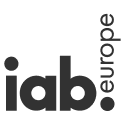Catch User Attention
Naturally with
Native Ad Server
Achieve both ad performance and flawless UX without sacrificing either. Blend your creatives into the page’s content and subtly engage users with ads that don’t look like such.
Get instant access to your demo account, or start with a 14-day trial.

Proud partner of:




Reap the Benefits of More
User-Friendly Advertising
Build your own native ad server to excel at subtle advertising and effortless user
engagement. Discover the advantages of native ad serving for your business type.
Choose Standard or Tailor-
Made Native Templates
Use our standard in-feed template to effortlessly set your ads in the native ad
server, or customize it to deliver your message in a unique media format.
Our Native Ad Server’s
Powerful Features
Create flawless native ads with our specialized functionality. Fine-tune
each campaign to the slightest detail for optimal results.

Integrate Ads Seamlessly
Link the right banners to the right placements and instantly launch campaigns. Pass any of the 20+ pre-set or add custom parameters to mimic the look of the site’s content.

Serve Flexible Ads with JSON
Optimize ad delivery with JSON format. Build dynamic ad units and update them in real time instead of pasting ready-made ads with Javascript tags.

Unify Multiple Creatives
Synchronize various ad creatives within a single platform on the campaign level. Put the required settings just once and apply them to all ads in a batch.

Target Audience Strategically
Adjust diverse targeting parameters to show your ad to the most relevant users. Pair audience segments with dynamic element insertion into your native templates.

Analyze Native Ad Metrics
Gain prompt insights into your native ad server performance for accurate decisions. Track engagement, click-through rates, and other crucial metrics to maximize ROI.

Bypass Ad Blockers
Increase the chance to get past ad blockers thanks to JSON requests, which imply direct server-to-server communication without dealing with the user’s browser.

“Our partnership with Epom is one of the reasons our ad network grew 5x in seven years. Their flexibility and support helped us tremendously enhance our native ad serving. I’d say the variety of customization options is key here.”Explore demo
Explore More Solutions
from Epom
Fulfill your full business potential with ad serving formats beyond native.
FAQ
Epom ad server offers 4 pricing plans tailored for different purposes and businesses: Light, Growth, Pro, and Enterprise.
Monthly plans cost $250, $1000, and $2500 accordingly; the price for the Enterprise plan depends on your specific requests, so it is formed after you consult with the sales team.
Annual plans allow you to save 15% monthly, so the price is lower in this case: $212/mo, $850/mo, $2125/mo. The enterprise plan still needs to be discussed in person with the sales team, but the discount is available too.
A native ad server is a solution that allows you to launch native ad campaigns. “Native” means that ad creatives here don’t look like obvious advertisements but naturally pass as regular editorial and commercial content. Platforms like Epom offer robust features for creating and optimizing these ads, ensuring they align perfectly with the site's design.
Within Epom ad server, you can design a native banner and link it to the appropriate native placement. Native ads utilize JSON for dynamic design customization instead of a classic Javascript tag. JSON allows you to “construct” the ad when serving it, picking the suitable styles and elements from those you’ve set before.
Popular native formats include in-feed ads on news sites, in-app ads, content recommendation widgets, sponsored content, and native email widgets. You usually see these on editorial websites blended into the regular article list or content feed. Epom also offers rich media formats like responsive carousels, which showcase multiple creatives.
In Epom ad server, you can optimize ads through manual and automatic algorithms. You can activate CTR and CR optimizations at the campaign level or manually assign banner priorities, defining which one to show first.
Whether native ads avoid ad blockers depends on how well they fit the website's content. Most ad blockers stop ads by recognizing where they're coming from, especially if they're from big ad networks.
But with Epom native ad server, ads are made to blend in so well with the website that they look like part of it. Also, they are served under the publisher’s domain name and utilize JSON, which allows for server-to-server data transmission, bypassing the user browser. All this makes it harder for ad blockers to catch them.



